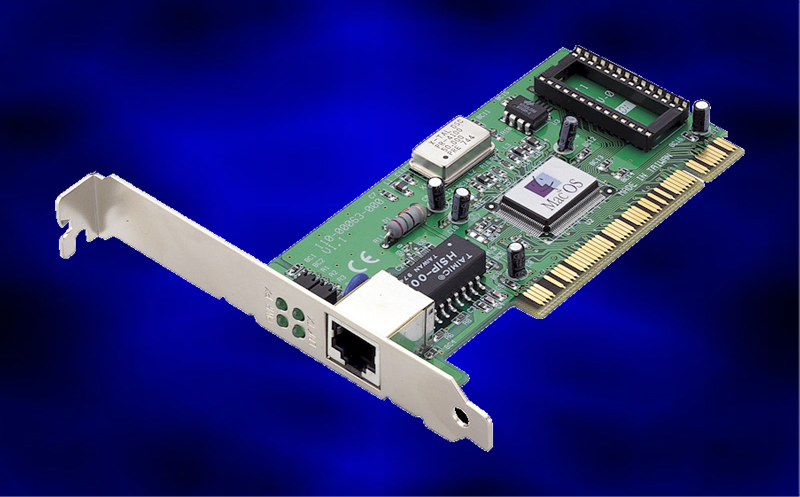Networking hardware includes all computers,
peripherals, interface cards and other equipment needed to perform data-processing
and communications within the network.
TYPES
OF NETWORK HARDWARE
- File server
- Workstation
- Network Interface Cards
- Concentrator/Hubs
- Repeater
- Bridges
- Router
- Switch
1)
FILE
SERVER
• Very fast
computer
• Large amount
of RAM and storage space,
• A fast network
interface card.
• Network operating
system software resides on this computer, along with any software applications
and data files that need to be shared.
2)
WORKSTATION
• configured
with a network interface card, networking software, and the appropriate cables.
• do not necessarily
storage capability; files can be saved on the file server.
• Almost any
computer can serve as a network workstation.
3)
NETWORK INTERFACE CARD
(NIC)
• provides the
physical connection between the network and the computer workstation.
• Major factor
in determining the speed and performance of a network
• Most NICs are
internal, with the card fitting into an expansion slot inside the computer.
• Some
computers, such as Mac Classics, use external boxes which are attached to a
serial port or a SCSI port.
• The three most
common network interface connections are
– Ethernet
cards
– Local Talk
connectors
– Token Ring
cards
a)
Ethernet cards
–
BNC(Bayonet Neill‐Concelman)
connection for coaxial cable
–
RJ-45 connection for twisted pair,
• Some Ethernet cards also contain an AUI connector,
used to attach coaxial, twisted pair or fiber optics cable to an Ethernet card.
b)
LocalTalk Connectors
• utilizes a special adapter box and a cable that
plugs into the printer port of a Macintosh.
• A major disadvantage of LocalTalk (.23 Mbps)
is that it is slow in comparison to Ethernet (10 Mbps).
Ethernet VS.
LocalTalk connection
|
|
Ethernet
|
LocalTalk
|
Fast data transfer (10Mbps)
|
Slow data transfer (.23
Mbps)
|
Expensive – purchased separately
|
Requires computer slot
|
Available for most computers
|
Works only on Macintosh computers
|
c)
Token Ring Card
• One visible difference is the type of connector on
the back end of the card.
• Generally have a nine pin DIN type connector to
attach the card to the network cable.
4)
HUB &
5) SWITCH
Hub and Switch
|
|
Hub
|
Switch
|
·
Both devices
contain ports to connect the devices together via networking cables and to
facilitate communication between the devices, but they differ in how they transfer
data.
|
|
|
|
  |
 |
6)
REPEATERS


•
To boost the signal with a device called a repeater. The repeater electrically amplifies
the signal it receives and rebroadcasts it.
•
Can be separate devices or they can be incorporated into a concentrator.
•
Used when the total length of your network cable exceeds the standards set for
the type of cable being used.
•
In a local area network using a star topology with unshielded twisted-pair
cabling. The length limit for unshielded twisted-pair cable is 100 meters.
·
-The most common
configuration is for each workstation to be connected by twisted-pair cable to
a multi-port active concentrator.
· -
The concentrator
amplifies all the signals that pass through it allowing for the total length of
cable on the network to exceed the 100 meter limit.
7)
BRIDGES
•
A bridge monitors the information traffic on both sides of the network so that
it can pass packets of information to the correct location the bridge manages the
traffic to maintain optimum performance on both sides of the network
•
It keeps information flowing on both sides of the network, but it does not
allow unnecessary traffic through.
•
can be used to connect different types of cabling, or physical topologies. They
must be between networks with the same protocol.
• A network
bridge connects multiple network segments.
• Bridges are similar
to repeaters or network hubs, devices that connect network
segments at the physical layer, however a bridge works by using bridging
where traffic from one network is managed rather than simply rebroadcast to
adjacent network segments.
• In Ethernet networks,
the term "bridge" often referred to as a network switch in
marketing literature.
8)
ROUTER
• translates
information from one network to another; it is similar to a super-intelligent
bridge.
• select the
best path to route a message, based on the destination address and origin.
• direct traffic
to prevent head-on collisions, and is smart enough to know when to direct
traffic along back roads and shortcuts.
 •
While bridges know the addresses of all computers on each side of the network,
routers know the addresses of computers, bridges, and other routers on the network.
Routers can even "listen" to the entire network to determine which
sections are busiest - they can then redirect data around those sections until
they clear up.
•
While bridges know the addresses of all computers on each side of the network,
routers know the addresses of computers, bridges, and other routers on the network.
Routers can even "listen" to the entire network to determine which
sections are busiest - they can then redirect data around those sections until
they clear up.
-It
also determines the best route to send the data over the Internet.
-Routers
can:
•
Direct signal traffic efficiently
•
Route messages between any two protocols
•
Route messages across fiber optic, coaxial, and twisted-pair cabling
9)
GATEWAY
– A protocol translation/mapping gateway
interconnects networks with different network protocol technologies by
performing the required protocol conversions.







No comments:
Post a Comment